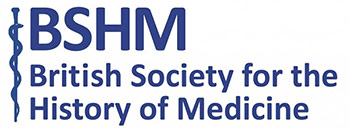
1918 flu epidemic: the Oakland Municipal Auditorium in use as a temporary hospital. Photo by Edward A. “Doc” Rogers. From the Joseph R. Knowland collection at the Oakland History Room, Oakland Public Library. Digital copy via http://content.cdlib.org/ark:/13030/kt3q2nc9rt/?&query=
In this time of great uncertainty around the impact that Coronavirus disease 2019 (COVID-19) will have on populations and health systems globally, can we look to history to help us in its management?
Many have already drawn comparisons between COVID-19 and the 1918 influenza pandemic, also known as ‘Spanish Flu’. The 1918 influenza pandemic which spanned a couple of years from 1918-1920 infected 27 per cent of the world’s populations, and killed between 17 and 50 million, making it one of the deadliest pandemics in modern history.
While it may have occurred over a century ago, in many ways the situation with COVID-19 is similar to that facing nations in 1918. With no specific treatment or vaccination available except best supportive care, governments are turning to epidemiologists to help stop the spread and mitigate the damage caused by the disease.
A widely circulated graphic from the paper, ‘Public health interventions and epidemic intensity during the 1918 influenza pandemic’ by Hatchett et al. shows how differing public health responses resulted in different death rates between two American cities: Philadelphia and St Louis.

Excess P&I mortality over 1913–1917 baseline in Philadelphia and St. Louis, September 8–December 28, 1918. Source: Hatchett et al. https://doi.org/10.1073/pnas.0610941104
While authorities in Philadelphia became aware of the disease on 17 September 1918, they downplayed its significance and still allowed large social gatherings to take place including, a city-wide parade. They only implemented measures such as school closures and a ban on public gatherings on 3 October.
By contrast St Louis reported its first cases of the disease on 5 October and authorities mobilised containment measures rapidly on 7 October. The difference in the responses between both cities appear to have borne out in the excess pneumonia and influenza death rates seen in both cities.
Philadelphia experienced a peak weekly pneumonia and influenza excess death rate of 257 per 100,000 whereas St Louis experienced a rate of 31 per 100,000.
The above example appears to demonstrate the impact of early interventions such as social distancing to help contain the spread of the disease. If anything is to be learned from history a rapid implementation of such measures may be required to contain the spread of COVID-19.
For further reading on the impact of ‘Spanish Flu’, please refer to this post by Jane Orr.
Words by Flora Malein
Sources used:
Taubenberger JK, Morens DM (2006). “1918 Influenza: the mother of all pandemics”. Emerging Infectious Diseases. 12 (1): 15–22. doi:10.3201/eid1201.050979. PMC 3291398. PMID 16494711.
Spreeuwenberg; et al. (2018). “Reassessing the Global Mortality Burden of the 1918 Influenza Pandemic”. American Journal of Epidemiology. 187 (12): 2561–2567. doi:10.1093/aje/kwy191. PMID 30202996
Richard J. Hatchett et al. (2007) Public health interventions and epidemic intensity during the 1918 influenza pandemic. PNAS May 1, 2007 104 (18) 7582-7587; first published April 6, 2007 https://doi.org/10.1073/pnas.0610941104

